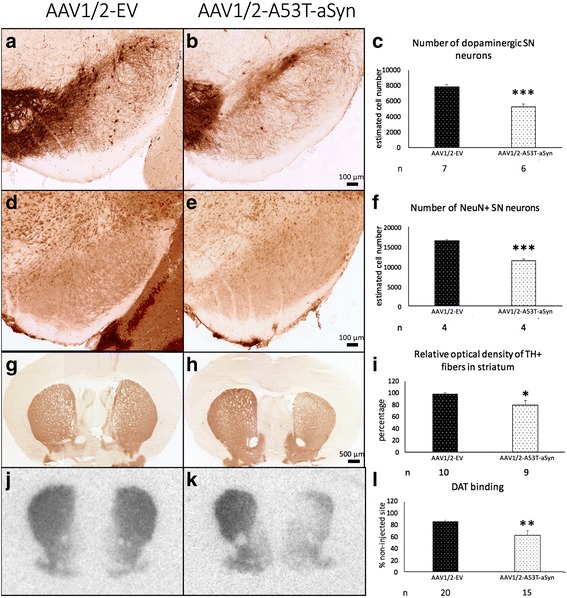Fig. 2.

AAV1/2-A53T-aSyn administration in the SN causes neurodegeneration in the nigrostriatal tract. a-c Immunohistochemical staining of the injected, right SN for TH+ dopaminergic neurons. 10 weeks after administration of AAV1/2 into the SN a significant difference of TH+ dopaminergic neuronal cell number is visible comparing AAV1/2-EV (a) to AAV1/2-A53T-aSyn treated mice (b). AAV1/2-A53T-aSyn (white bar) induces a significant reduction of TH+ neurons by ~33% as compared to AAV1/2-EV mice (black bar) (mean ± SEM) (c). d-f) At the same timepoint a significant reduction of total NeuN+ neurons by ~31% was found in AAV1/2-A53T-aSyn injected mice as compared to AAV1/2-EV control mice (mean ± SEM). g-i TH immunohistochemical staining of AAV1/2-EV delivered striatum (g). AAV1/2-A53T-aSyn injection in the SN leads to an ipsilateral decrease of the optical density by ~20% as compared to AAV1/2-EV mice (mean ± SEM) (h, i). j-l) Images of striatal DAT binding by autoradiography reflects comparable reduction of striatal dopaminergic fibers by ~29% in AAV1/2-A53T-aSyn as compared to AAV1/2-EV treated mice (mean ± SEM). *P < 0.05; **P < 0.01; ***P < 0.001
